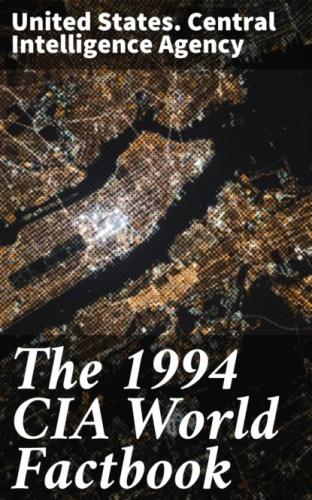Asia, Standard Time Zones of the World
Area:
total area:
47,000 sq km
land area:
47,000 sq km
comparative area:
slightly more than half the size of Indiana
Land boundaries:
total 1,075 km, China 470 km, India 605 km
Coastline:
0 km (landlocked)
Maritime claims:
none; landlocked
International disputes:
none
Climate:
varies; tropical in southern plains; cool winters and hot summers in
central valleys; severe winters and cool summers in Himalayas
Terrain:
mostly mountainous with some fertile valleys and savanna
Natural resources:
timber, hydropower, gypsum, calcium carbide
Land use:
arable land:
2%
permanent crops:
0%
meadows and pastures:
5%
forest and woodland:
70%
other:
23%
Irrigated land:
340 sq km (1989 est.)
Environment:
current issues:
soil erosion; limited access to safe drinking water
natural hazards:
violent storms coming down from the Himalayas are the source of the
country's name which translates as Land of the Thunder Dragon
international agreements:
party to - Nuclear Test Ban; signed, but not ratified - Biodiversity,
Climate Change, Law of the Sea
Note:
landlocked; strategic location between China and India; controls
several key Himalayan mountain passes
@Bhutan, People
Population: 716,380 (July 1994 est.) note: other estimates range as high as 1.7 million (July 1994 est.) Population growth rate: 2.34% (1994 est.) Birth rate: 39.31 births/1,000 population (1994 est.) Death rate: 15.93 deaths/1,000 population (1994 est.) Net migration rate: 0 migrant(s)/1,000 population (1994 est.) Infant mortality rate: 121 deaths/1,000 live births (1994 est.) Life expectancy at birth: total population: 50.6 years male: 51.15 years female: 50.03 years (1994 est.) Total fertility rate: 5.42 children born/woman (1994 est.) Nationality: noun: Bhutanese (singular and plural) adjective: Bhutanese Ethnic divisions: Bhote 50%, ethnic Nepalese 35%, indigenous or migrant tribes 15% Religions: Lamaistic Buddhism 75%, Indian- and Nepalese-influenced Hinduism 25% Languages: Dzongkha (official), Bhotes speak various Tibetan dialects; Nepalese speak various Nepalese dialects Literacy: total population: NA% male: NA% female: NA% Labor force: NA by occupation: agriculture 93%, services 5%, industry and commerce 2% note: massive lack of skilled labor
@Bhutan, Government
Names:
conventional long form:
Kingdom of Bhutan
conventional short form:
Bhutan
Digraph:
BT
Type:
monarchy; special treaty relationship with India
Capital:
Thimphu
Administrative divisions:
18 districts (dzongkhag, singular and plural); Bumthang, Chhukha,
Chirang, Daga, Geylegphug, Ha, Lhuntshi, Mongar, Paro, Pemagatsel,
Punakha, Samchi, Samdrup Jongkhar, Shemgang, Tashigang, Thimphu,
Tongsa, Wangdi Phodrang
Independence:
8 August 1949 (from India)
National holiday:
National Day, 17 December (1907) (Ugyen Wangchuck became first
hereditary king)
Constitution:
no written constitution or bill of rights
Legal system:
based on Indian law and English common law; has not accepted
compulsory ICJ jurisdiction
Suffrage:
each family has one vote in village-level elections
Executive branch:
Chief of State and Head of Government:
King Jigme Singye WANGCHUCK (since 24 July 1972)
Royal Advisory Council (Lodoi Tsokde):
nominated by the king
cabinet:
Council of Ministers (Lhengye Shungtsog); appointed by the king
Legislative branch:
unicameral National Assembly (Tshogdu); no national elections
Judicial branch:
High Court
Political parties and leaders:
no legal parties
Other political or pressure groups:
Buddhist clergy; Indian merchant community; ethnic Nepalese
organizations leading militant antigovernment campaign
Member of:
AsDB, CP, ESCAP, FAO, G-77, IBRD, ICAO, IDA, IFAD, IMF, INTELSAT, IOC,
ITU, NAM, SAARC, UN, UNCTAD, UNESCO, UNIDO, UPU, WHO
Diplomatic representation in US:
no formal diplomatic relations; the Bhutanese mission to the UN in New
York has consular jurisdiction in the US
consulate(s) general:
New York
US diplomatic representation:
no formal diplomatic relations, although informal contact is
maintained between the Bhutanese and US Embassies in New Delhi (India)
Flag:
divided diagonally from the lower hoist side corner; the upper
triangle is orange and the lower triangle is red; centered along the
dividing line is a large black and white dragon facing away from the
hoist side
@Bhutan, Economy
Overview:
The economy, one of the world's least developed, is based on
agriculture and forestry, which provide the main livelihood for 90% of
the population and account for about 50% of GDP. Rugged mountains
dominate the terrain and make the building of roads and other
infrastructure difficult and expensive. The economy is closely aligned
with that of India through strong trade and monetary links. The
industrial sector is small and technologically backward, with
